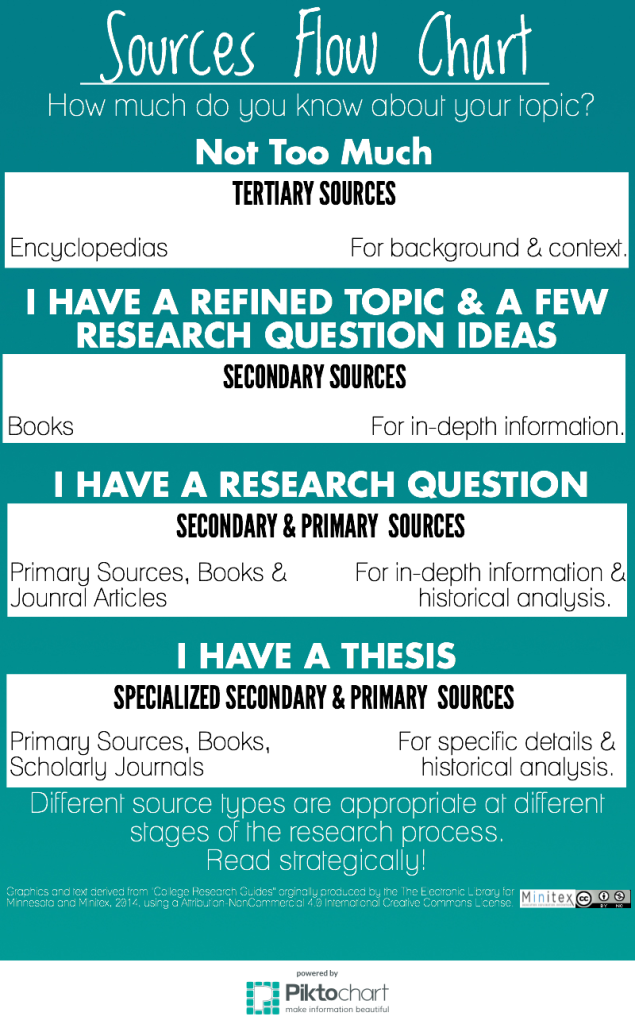
Types of published information:
The three labels for information sources in this category are, respectively, primary sources, secondary sources, and tertiary sources. Here are examples to illustrate:
|
Primary Source (Original, Firsthand Information) |
Carpenter, F. B.. Six Months at the White House with Abraham Lincoln. The Story of a Picture. By F. B. Carpenter., 1866. http://name.umdl.umich.edu/ACK7424.0001.001.
A memoir written in 1866 by a painter of Lincoln who lived at the White House with Lincoln during the Civil War. |
|
Secondary Source (Secondhand Information) |
Guelzo, Allen C. Fateful Lightning: A New History of the Civil War and Reconstruction. New York, UNITED STATES: Oxford University Press USA - OSO, 2012. http://ebookcentral.proquest.com/lib/spenceschool/detail.action?docID=886542.
Secondary source scholarly book written by a historian Allen Guelzo. Guelzo cites Carpenter's memoir in his book as primary source evidence. |
|
Tertiary Source (Third-hand Information) |
Gillis, Delia C. "Reconstruction." Encyclopedia of the Age of Revolution and Empire (1750 to 1900). Facts On File, 2016. Accessed August 1, 2022. online.infobase.com/Auth/Index?aid=104009&itemid=WE53&articleId=244826. Encyclopedia article about reconstruction. |
When you make distinctions between primary, secondary, and tertiary sources, you are relating the information itself to the context in which it was created.
Specificity of Sources
Encyclopedias provide a general overview of a topic in the context of World History. Scholarly articles focus on specific, targeted details about a narrow topic.



Images from "Thinking Critically about Information: “Good” and “Bad” Source Types" PowerPoint created by Kevin Klipfel, Information Literacy Coordinator, California State University, Chico. Contact: kklipfel@csuchico.edu.
